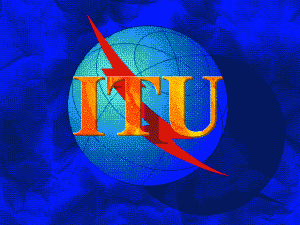Spectrum, auctions, airwaves and frequencies: What we can’t see and why we need to
Barbara Crow / York University
Spectrum, auctions, airwaves and frequencies: What we can’t see and why we need to

I delayed writing my third column on mobile television in the United States, as the national landscape is quite different from the one I live in and study. I was originally compelled to write about the relevance of mobile television in a U.S. context and not in a Canadian one. However, a recent spectrum auction generated fodder for this column.1
Spectrum: What is it and why is it important?
Spectrum refers to the transmission and regulation of airwaves into frequencies.
EM Spectrum Properties:
These frequencies are allocated in bands referring to services on an exclusive or shared basis (ITU 2004). There are also extensive regulations regarding service category (i.e., fixed service, mobile service) and service type (which describes types of transmissions and emissions). While spectrum, like the air we breathe, seems to exist in unlimited quantities, it is important that we understand spectrum, or these radio-wave frequencies, as a finite resource. (It is too difficult to represent on-line how this ephemeral space is allocated, but for those who are interested, a powerful representation of how little of this space is public and/or allocated for “free” use can be viewed in the U.S. Frequency Allocation Chart available from the National Telecommunications and Information Administration.)
Most nations have a governing body with administering policies related to telecommunications (in the United States, it is the Federal Communications Commission (FCC)). Internationally, two institutional bodies have played significant roles in shaping spectrum, the International Telecommunications Union (ITU) and the Institute of Electrical and Electronics Engineers (IEEE). The ITU, in particular, has been critical in setting out standards and policy recommendations on how to allocate spectrum.

The main objective of the ITU is to establish frequency allocations and regulatory procedures for the harmonious operation of global radio communication services and to ensure that these services do not interfere with competing signals and transmissions. Briefly, the politics of the distribution of this resource involves:
. . . first, the allocation of these blocks of frequencies for particular users (e.g., broadcasters, military, mobile operators, etc.) and second, the assignment of specific frequencies within the allocated blocks to different ‘licensees’. Generally, licensees have the exclusive right to use the assigned frequencies to provide designated services. Typically, spectrum users are granted temporary licenses, even though renewal is often a formality (ITU 2006).
There are two primary methods of purchasing these frequencies through auctions and ‘beauty contests,’ a term which reveals the highly gendered assumptions embedded in this technical universe. Auctions tend to be the most popular way nations sell spectrum allocation, and beauty contests are determined by which individual, organization, or industry can demonstrate their capacity to best utilize it. Critics of the spectral auction raise concerns about governments generating revenue from licensing and the enormous capital required to bid for spectrum allocations. Those concerned with the beauty contest format worry whether government regulators have sufficient training to determine who has the best technical and business models (Xavier 2001).
These auctions and beauty contests are highly profitable events. In 2001, when the last set of auctions for 3G licenses in Europe were held, they raised over $1.5 billion dollars. Cost for the spectrum ranged from 20 Euros per capita in Switzerland to 650 Euros per capita in the United Kingdom (Klemperer 2004).
Important to understand, particularly for counter-public groups with limited financial resources, is that there are two forms of spectrum. The largest part of spectrum, while licensed and regulated, is primarily limited to corporate control and harnessed for profit because it is so expensive. There is a small proportion of spectrum that is unlicensed, free, and available for public use. It is this portion of the spectrum that is primarily available to wireless technology activists and not-for-profit and community-based organizations.2 The unlicensed spectrum was first guaranteed by the IEEE, another international body key to the development of the wireless world of communication.3

Why is this relevant for mobile TV?
A discussion of spectrum is particularly relevant, given the mandatory FCC digital tuner regulation:
. . . specifies that as of March 1, 2007, all new TVs must include digital tuners. This rule prohibits the manufacture, import, or interstate shipment of any device containing an analog tuner, unless it also contains a digital tuner. Despite this prohibition on manufacture and shipment, retailers may continue to sell analog-only devices from existing inventory. As a result, at the point of sale, many consumers may not be aware that this equipment will not be able to receive over-the-air-television signals after February 17, 2009.
By February 17, 2009 television broadcasting will only be delivered in digital format. The FCC will provide boxes for those with analog sets to convert digital television program delivery. They have been introducing “coupons,” as well as monitoring producers and sellers, to ensure proper notification to consumers of what is required to make your current television compatible and the status of new television sets and their compliance with digital conversion.
While the benefits of digital television have been espoused by the telecommunications industry in the United States, there has been little intervention beyond education workshops to prepare consumers for this transition. Most of the focus on the transition is on how to get consumers “digital” ready instead of the more long-term implications of the corporate benefits of this transition. The digital delivery of television is happening in licensed spectrum. The high costs of the spectrum and the proprietary software of the mobile phone industry will continue the telecommunications industries control of what and how we access, use, and watch digital television on mobile phones.
Spectrum matters and we need to learn more about how it works and where we can intervene. Its ephemeral qualities, its magical and mythical representations, and its promise to emancipate make it difficult for us to understand and make demands of its ever-expanding commodification.
References:
International Telecommunication Union. (2006). Overview – ITU Council.
Klemperer, Paul. Auctions: Theory and Practice. New Jersey: Princeton University, 2004.
Xavier, Patrick. 2001. “Licensing of 3G Mobile.” Briefing Paper, School of Business, Swinburne University of Technology. www.itu.int/osg/spu/ni/3G/workshop/presentations/Xavier_1.pdf (accessed 1 May 2007).
Image Credits:
1. Frequencies and Spectrum
2. ITU Logo
3. Mobile TV Phone
Please Feel Free to Comment
- In Canada and the United States there have been two recent spectrum auctions, “The Real Cost of High Prices,” http://www.cbc.ca/news/background/tech/cellphones/economy.html and “Government of Canada Opens Up Wireless Industry to More Competition,” Ottawa, May 27, 2008 http://www.ic.gc.ca/cmb/welcomeic.nsf/261ce500dfcd7259852564820068dc6d/85256a5d006b972085257456004d567b!OpenDocument and “FCC closes 700MHz spectrum auction,” http://www.infoworld.com/article/08/03/19/FCC-closes-700MHz-spectrum-auction_1.html: “The controversial 700MHz spectrum auction has closed, raising $19.59 billion, a record for a spectrum auction in the United States, the U.S. Federal Communications Commission.” [
]
- This part of the 5 GHz and 2.4 GHz public spectrum (802.11a, b, g, n) has been taken up, not unlike the ham and public radio in an earlier wireless era, by Community Wireless Networks (CWNs). [
]
- The last five paragraphs were edited from the jointly authored article, Barbara Crow and Kim Sawchuk, “The Spectral Politics of Mobile Communication Technologies: Gender, Infrastructure and International Policy,” in K. Sarikakis and L. Regan Shade, Eds., Minding the Gap: Feminist Interventions in International Communication, New York: Roman & Littlefield, 2008, pp. 90-105. [
]
Thanks very much for your contribution to this issue of Flow. I liked that you focused on the limits of spectrum, something we presume to be infinite. Furthermore, the increasing digitization of technology ratchets up several social and economic concerns — both in the U.S. and Canada, as well as in other countries. I appreciated your efforts to further contextualize this cultural development in both a domestic setting, as well as acknowledge the situation in Europe.
I’m left with two questions, which are concerned with class and national monetary power. One, will the digital format narrow or widen the chasm of the digital divide? Second, do these developments bridge technological advancements in developing nations, or leave them behind as the world becomes increasingly digitized?
I hope my view of the DTV transition is absolutely incorrect, but having just made the leap from the comparatively forgiving analog approach to free TV, I see problems ahead. Variables affecting digital signal strength may not be more numerous than of yore, but the all-or-none character of digital reception initiates considerable frustration that extends to the lack of transparency in the intentions of powerful licensees whose closed systems and high thresholds preclude enjoyment of appointment television. The Twilight Zone is behind us as we enter the Either\Or Continuum (where “No Signal” is frequently written on that signpost up ahead).
The contemporary climate of “concentrated competition” means to me that a very limited number of decision-makers are managing studios, networks and wireline services with similar kinds and degrees of antiquated competence that are driving the United States ever farther down the list of global innovators in these arenas.
Ironically, the preservation of revenue streams from our aging infrastructure seem to be significant impediments to egalitarian technological development. I would love to be dead-wrong.